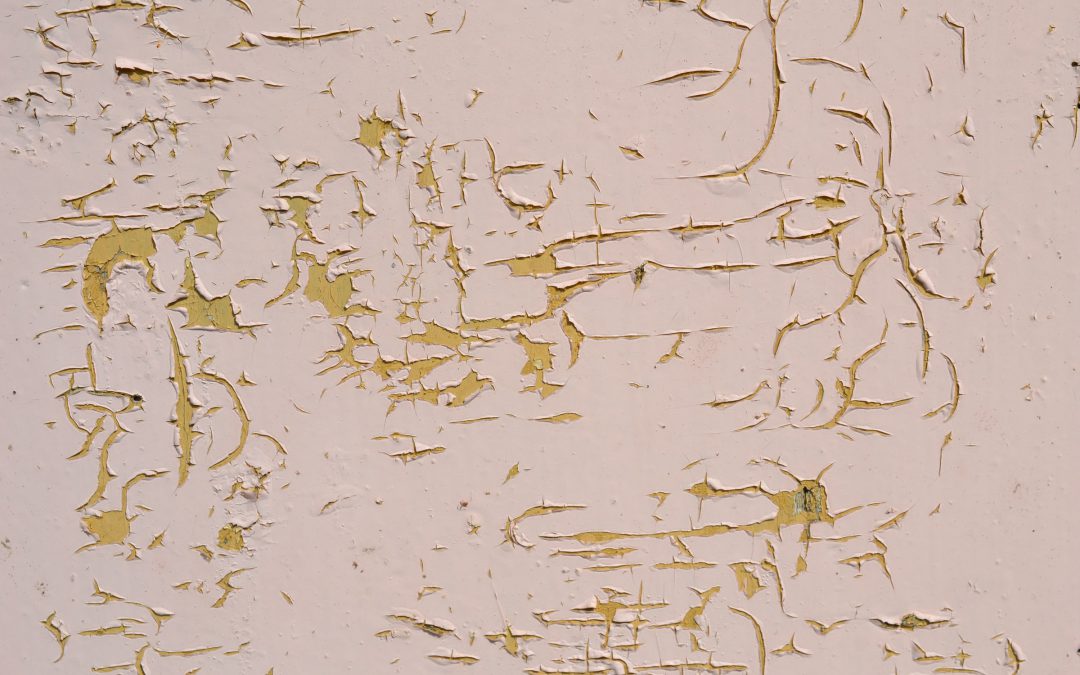
Why is my ceiling paint cracking?
Why is my ceiling paint cracking?
Have you ever looked up you’re ceiling and observed cracking and peeling paints? Ceiling paint cracking can occur for several reasons. It can happen because of excess moisture or improper painting techniques.
But for whatever reason it is happening, you must resolve this issue right away. Cracked paint on the ceiling is untidy to look at. The process can be long and tedious but with the help of professional painters, your ceiling can bounce back to normal in no time.
4 Most Common Causes Peeling Paint on Your Ceiling
Moisture
In places where the humidity is high, moisture can quickly build upon surfaces. It can build on your walls, floors, and ceilings. Since ceilings are very hard to reach, the moisture there can stay for longer durations of time, which will, later on, affect the condition of your paint.
Some rooms that are prone to cracked paint are bathrooms, comfort rooms, and kitchens. However, paint cracking can also happen in your bedroom depending on the humidity level.
Water Leak
When the moisture reaches the ceiling, it will make itself known in many ways. First, you will notice that the paint bubbles up, which means it still has water inside it. As time goes by, these bubbles can turn into cracks and your paint will start fading and peeling off.
Soap Build Up
This happens in washrooms, bathrooms, and comfort rooms. When you take a bath, the steam can go up and stick to the walls and ceilings. If your paint is not water-resistant it can crack and peel over time.
Candles
You should be careful where you light your candles. Just because your ceiling is high doesn’t mean that the smoke from your burning candle does not reach up. If there has been lots of smoke or even fire damage, the first sign of damage can happen in your ceiling.
Other Causes of Cracked Paint on Your Ceiling
- Water
- A dirty surface and poor surface preparation
- High temperatures and intense sunlight
- Too many layers of paint
- Many different coats of paint on the same surface
- Low-quality paint
- Expired paint
- Extreme dryness
- Corrosive substances
How To Get Rid of Cracked Paint in the Ceiling
Cracked paint in the ceiling can happen both in new and old homes. However, it can become an eyesore if not fixed. If you happen to see cracked paints on your ceilings, it is important to remedy the damage right away.
Simple problems can lead to bigger ones when not repaired. Below, you will learn some tips on how to get rid of cracked paint in the ceiling.
Reduce Moisture In the Attic
Moisture can come from a lot of sources. But for most homes, moisture comes from the attic and slowly permeates in the ceiling. If you have a drywall ceiling, moisture can move faster into the paint.
To prevent moisture from reaching the top, make sure you adjust your home humidity. A home humidifier can bring great help for homes that suffer from high humidity levels. On the other hand, inspect your home for leaks. Water could be leaking from your roof or pipeline.
Furthermore, check for mold growth. Moisture can also develop from molds in your home. During your inspection, try spot spaces where molds usually growth such as in the corners of your ceiling. If you are using steel trusses, they may be corroded, which will also lead to moisture build-up.
Be careful when moving around. If you can’t do it on your own, do not hesitate to contact a professional to do it for you.
Use a Compatible Paint
If your ceiling is leaking, it is possible that the paint you are using is not compatible with the materials used to build your ceiling. For example, if you have applied oil-based paint directly on top of latex paint, cracking will happen at some point. This is because latex paint is porous and will allow moisture to penetrate.
If this is the case, you may have to completely repaint your ceiling. First, try to strip the old paint from your ceiling. If your ceiling is made of wooden materials, you can easily DIY the process. Before applying new paint, sand and scrape the remaining paint.
This helps clean up the space and prepare it for the new paint. Other ceiling types are harder to fix. By hiring a professional painter, you will get the job done right.
Prep Your Ceiling Well
In case you are repainting your ceiling, it is important that you prep your ceiling well.
If the paint is applied on an uneven surface, it won’t take long before the new paint begins to blister. Sooner or later, the same problem would occur.
Other factors such as incomplete joint compounds and improperly placed seam tapes can affect the permeability of your ceiling. Hence, make sure that you prep your ceiling well before applying the new paint. Remove all the dirt that sticks on your ceiling – not just the cracked paint – but also some cobwebs, dust, and built-up sediments.
Prime The Surface
Before anything else, it is ideal to prime the surface. There are excellent primers in the market that you can invest in. Primers help cover up the surface and secure possible holes where the moisture would usually go through. It blocks pores and also provides a great guard against mildew and watermarks.
If you are priming your bathroom, you may need to use oil-based or stain-blocking primers. Since bathrooms are prone to water leaks, steam, and moisture, an oil-based primer can help block as much water as it needs.
Maintain Your Ceiling
Just because you have painted your ceiling doesn’t mean you can stop caring. Proper home maintenance can prevent the same problem to occur in the future. Hence, make sure that you keep water-prone parts in check. Monitor your pipelines and make sure no parts are leaking.
Wild Fox Painting
Guest Writer
Wild Fox Painting is focused on providing Trustworthy, Reliable and Respectful interior painting solutions for your home.


Recent Comments